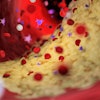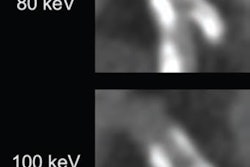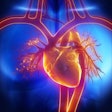Photon-counting CT (PCCT) has much to offer when it comes to pediatric imaging, according to a review article published October 25 by American researchers in the British Journal of Radiology.
The technology could make diagnosis of diseases and/or conditions among children easier, wrote a team led by Kelly Horst, MD, of the Mayo Clinic in Rochester, MN.
"Because children are generally more prone to movement during scan acquisition than are adult patients, pediatric CT protocols tend to prioritize rapid image acquisition to reduce motion artifacts, in addition to radiation dose reduction," the group noted. "Dual-source CT [i.e., PCCT] offers one method to optimize scan speed, where two x-ray tube/detector pairs scan overlapping body regions at high table speeds, achieving a temporal resolution that is a factor of two superior to single-source geometries."
PCCT has generated much excitement as a CT innovation, with benefits such as reduced radiation dose and high-resolution images. The technology "can greatly benefit pediatric patients by facilitating high-quality fast scanning to allow sedation-free imaging," the group wrote. In their review, the team outlined PCCT's benefits for pediatric imaging:
Increased spatial resolution. PCCT's ability to produce high-resolution images not only translates to "earlier detection of metastatic lung nodules … [and better visualization of] small cardiac structures in pediatric patients, it may also boost reader confidence in identifying reticulation, ground-glass opacities, and mosaic pattern in interstitial pneumonia.
Reduced radiation dose. Use of CT has increased among children in the past few decades, prompting concerns about the long-term effects of radiation in a pediatric population, the team noted. PCCT addresses this concern by its ability to scan quickly; some research has found a 30% dose reduction in soft tissue studies and a 70% reduction for exams requiring iodinated contrast. "A unique quality of [PCCT] that allows radiation dose reduction is its ability to eliminate electronic noise," the authors explained.
Improved iodine signal. "Unlike [conventional CT], where the signal recorded is the summation of all photon energies, individual incident photons and their energy information are recorded in [PCCT]," Horst and colleagues wrote. "The photon-counting detection mechanism allows for lower energy photons, which carry more iodine signal, to be more optimally weighted in the output signal than in [conventional CT, thereby increasing iodine signal-to-noise ratios."
PCCT shows promise as an effective way to image pediatric patients, yet more research is needed, according to the authors.
"[PCCT] is suited to address many challenges in pediatric imaging," they concluded. "Its superior spatial resolution benefits pediatric patients with their small anatomic structures. The increased dose efficiency is also desirable … [and] improved iodine contrast … may improve detection of subtle abnormalities in oncology, with high pitch imaging negating the need for sedation in some pediatric CT imaging. Further work is needed by the pediatric radiology community to take full advantage of the benefits of [PCCT] for our patients."
The complete review can be found here.
Disclosure: Siemens Healthineers provided the Mayo Clinic with the PCCT scanner (Naeotom Alpha) used in this research as part of a sponsored research agreement. Cynthia McCollough, PhD, and Joel Fletcher, MD, are the recipients of a Siemens Healthineers research grant.



















